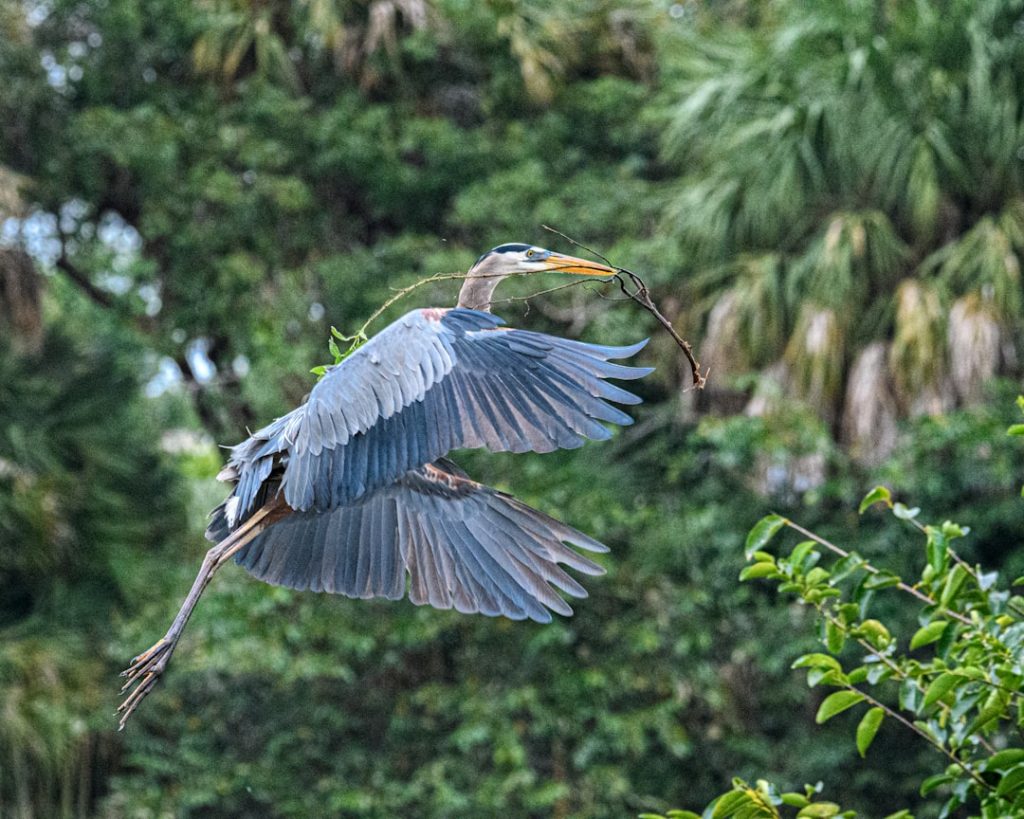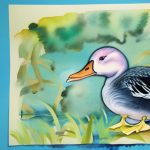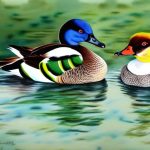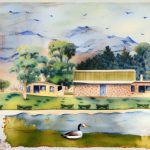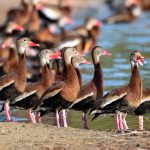Duck breeding season is an exciting and crucial time for these waterfowl. It is during this time that ducks engage in mating rituals, build nests, lay eggs, and raise their young. The breeding season typically occurs in the spring and summer months when the weather is warmer and food sources are abundant. This is a critical time for ducks to ensure the survival of their species, and it is fascinating to observe their behaviors and activities during this period.
During the breeding season, ducks undergo significant physiological and behavioral changes. Male ducks, known as drakes, become more aggressive and territorial as they compete for the attention of female ducks, or hens. Female ducks, on the other hand, become more selective in choosing a mate and preparing a suitable nesting site. Understanding the intricacies of duck mating behavior, nesting habits, and parental care is essential for conservation efforts and protecting duck populations.
Table of Contents
- 1 Understanding Duck Mating Behavior
- 2 Nesting and Egg-laying Process
- 3 Incubation and Hatching of Ducklings
- 4 Parental Care and Rearing of Ducklings
- 5 Challenges and Threats During Duck Breeding Season
- 6 Conservation Efforts and Protection of Duck Breeding Habitats
- 7 FAQs
- 7.1 What is duck breeding season?
- 7.2 When does duck breeding season occur?
- 7.3 What behaviors are associated with duck breeding season?
- 7.4 How long does duck breeding season last?
- 7.5 What are some common challenges during duck breeding season?
- 7.6 What can people do to support duck breeding season?
Key Takeaways
- Duck breeding season typically occurs in the spring and early summer when the weather is warmer and food is abundant.
- Male ducks display aggressive mating behavior, often chasing and fighting with other males to establish dominance and attract females.
- Female ducks select nesting sites in secluded areas near water and lay a clutch of eggs over a period of several days before beginning incubation.
- Duck eggs typically take around 28 days to hatch, and the mother duck provides warmth and protection during this time.
- Ducklings are precocial and can feed themselves shortly after hatching, but they still rely on their mother for protection and guidance.
Understanding Duck Mating Behavior
Duck mating behavior is a complex and fascinating aspect of their breeding season. Male ducks use various displays and vocalizations to attract females and establish dominance within their social groups. These displays often involve head bobbing, tail wagging, and vocal calls to signal their readiness to mate. Additionally, male ducks may engage in aggressive behaviors such as chasing and fighting with other males to establish their dominance and secure a mate.
Female ducks play an active role in the mating process by assessing potential mates and choosing the most suitable partner. They may observe the displays of male ducks and select a mate based on their physical attributes, vigor, and overall health. Once a pair bond is formed, the male and female ducks engage in courtship behaviors such as preening each other’s feathers and engaging in synchronized swimming displays. This courtship period allows the ducks to strengthen their bond before proceeding to nest building and egg-laying.
Overall, understanding duck mating behavior is crucial for conservation efforts as it provides insights into the social dynamics and reproductive success of duck populations. By studying these behaviors, researchers can develop strategies to protect breeding habitats and ensure the long-term survival of duck species.
Nesting and Egg-laying Process
After forming a pair bond, female ducks begin the process of selecting a suitable nesting site and building a nest. They typically choose locations near water bodies such as ponds, lakes, or marshes to provide protection from predators and easy access to food sources. Female ducks use a variety of materials such as grass, reeds, and down feathers to construct their nests, creating a cozy and secure environment for their eggs.
Once the nest is complete, female ducks lay a clutch of eggs over a period of several days, with each egg being laid approximately one day apart. The number of eggs in a clutch can vary depending on the species of duck, with some laying as few as 6-8 eggs while others may lay up to 12-15 eggs. The eggs are typically white or off-white in color, providing camouflage within the nest to protect them from potential predators.
The egg-laying process is a critical stage in the breeding season, as it sets the stage for the next phase of incubation and hatching. Female ducks diligently tend to their nests, carefully arranging the eggs and keeping them warm with their down feathers. This process is essential for the development of the embryos within the eggs and sets the stage for the arrival of ducklings in the coming weeks.
Incubation and Hatching of Ducklings
Once the eggs are laid, female ducks begin the process of incubating them to facilitate the development of the embryos inside. Incubation typically lasts for around 25-30 days, during which time the female duck diligently sits on the nest to keep the eggs warm and ensure their proper development. This period is crucial for the survival of the embryos, as consistent warmth is essential for their growth and hatching.
As the incubation period nears its end, the eggs begin to show signs of hatching as the embryos become more active inside. Female ducks may also exhibit increased restlessness and vocalizations as they anticipate the arrival of their ducklings. Finally, the eggs start to hatch, with the ducklings using their egg tooth to break through the shell and emerge into the world.
The hatching process is an incredible sight to behold as tiny ducklings emerge from their eggs, wet and vulnerable at first before quickly fluffing up their down feathers. The newly hatched ducklings are immediately mobile and ready to follow their mother to water where they can begin feeding and learning essential survival skills. This marks the beginning of a new generation of ducks, each with the potential to contribute to the overall population and continue the cycle of life.
Parental Care and Rearing of Ducklings
After hatching, female ducks assume the primary responsibility for caring for their ducklings, leading them to water sources where they can find food and protection. Ducklings are precocial, meaning they are born with their eyes open and are capable of independent movement shortly after hatching. However, they still rely on their mother for warmth, guidance, and protection from predators.
Female ducks diligently watch over their broods, teaching them how to forage for food, avoid predators, and navigate their environment. They also provide warmth and protection by allowing their ducklings to seek shelter under their wings or body when needed. This parental care is essential for the survival of ducklings during their vulnerable early stages of life.
Male ducks may also play a role in protecting ducklings from potential threats, although their involvement in parental care varies among different duck species. In some cases, male ducks may provide protection by keeping watch for predators or engaging in distraction displays to draw attention away from the vulnerable ducklings.
Overall, parental care and rearing of ducklings are crucial aspects of the breeding season that contribute to the survival and success of duck populations. By observing these behaviors and understanding the dynamics of parental care, researchers can develop strategies to protect breeding habitats and ensure the well-being of duck families.
Challenges and Threats During Duck Breeding Season
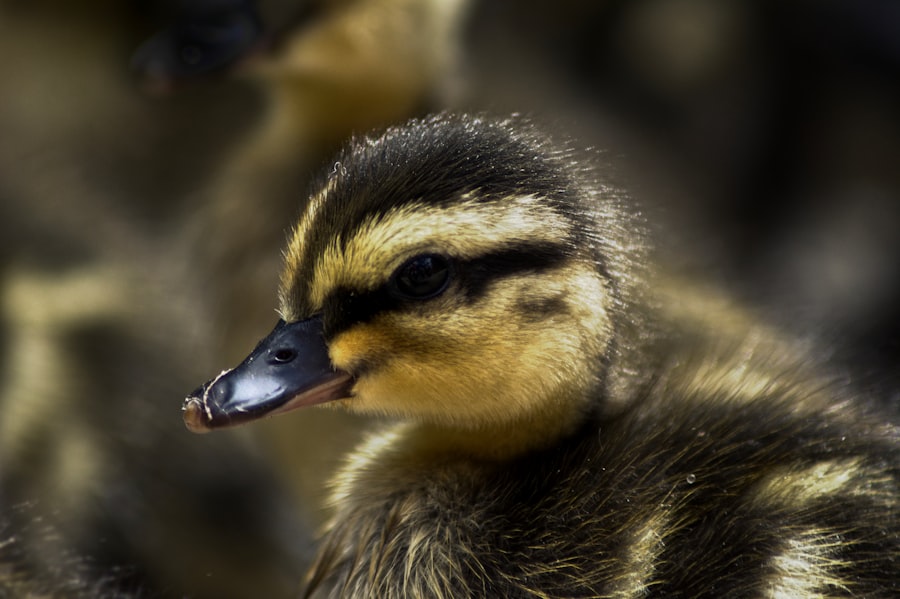
Despite their remarkable adaptations for breeding success, ducks face numerous challenges and threats during their breeding season. Habitat loss, pollution, predation, and human disturbance are among the primary threats that can impact duck populations and breeding success. Loss of wetland habitats due to urban development or agricultural expansion can limit nesting sites and food sources for ducks, leading to decreased reproductive success.
Pollution from agricultural runoff or industrial activities can contaminate water bodies where ducks feed and breed, leading to reduced food availability and potential health risks for duck populations. Additionally, predation by mammals such as raccoons, foxes, and mink can pose a significant threat to nesting ducks and their eggs or ducklings.
Human disturbance in breeding habitats can also disrupt nesting activities and cause stress for ducks, leading to decreased reproductive success. Activities such as boating, fishing, or recreational use of wetlands can disturb nesting ducks and cause them to abandon their nests or leave their young vulnerable to predation.
Understanding these challenges and threats is essential for developing conservation efforts aimed at protecting duck breeding habitats and ensuring the long-term survival of duck populations.
Conservation Efforts and Protection of Duck Breeding Habitats
Conservation efforts aimed at protecting duck breeding habitats are crucial for ensuring the survival of these iconic waterfowl species. Organizations such as Ducks Unlimited and The National Audubon Society work tirelessly to conserve wetlands, restore degraded habitats, and advocate for policies that support waterfowl conservation.
Wetland restoration projects play a vital role in providing suitable nesting sites and food sources for breeding ducks. By restoring wetlands through habitat enhancement techniques such as re-vegetation, water level management, and invasive species control, conservationists can create thriving ecosystems that support healthy duck populations.
In addition to habitat restoration, conservation efforts also focus on reducing pollution in water bodies where ducks breed and feed. This includes advocating for sustainable agricultural practices that minimize runoff into waterways and promoting responsible industrial waste management to protect water quality.
Furthermore, education and outreach programs aimed at raising awareness about the importance of protecting duck breeding habitats can help garner public support for conservation initiatives. By engaging communities in conservation efforts through citizen science projects, volunteer opportunities, and educational programs, conservationists can foster a sense of stewardship for wetlands and waterfowl among people of all ages.
Overall, conservation efforts aimed at protecting duck breeding habitats are essential for ensuring the long-term survival of these remarkable waterfowl species. By addressing threats such as habitat loss, pollution, predation, and human disturbance, conservationists can create a brighter future for ducks and other wildlife that depend on healthy wetland ecosystems.
If you’re interested in learning more about duck breeding season, you’ll find a wealth of information in the article “When is Duck Mating Season?” on PoultryWizard.com. Understanding the mating season is crucial for successful duck breeding, and this article provides valuable insights into the behavior and biology of ducks during this time. Whether you’re a novice or experienced breeder, this resource will help you navigate the complexities of duck mating season with confidence.
FAQs
What is duck breeding season?
Duck breeding season refers to the time of year when ducks engage in courtship, mating, and nesting in order to reproduce and raise their young.
When does duck breeding season occur?
Duck breeding season typically occurs in the spring and early summer, although the exact timing can vary depending on the species of duck and their geographic location.
What behaviors are associated with duck breeding season?
During breeding season, ducks engage in courtship displays, mate selection, and nest building. Male ducks often display elaborate behaviors to attract females, while females seek out suitable nesting sites and lay their eggs.
How long does duck breeding season last?
The duration of duck breeding season can vary, but it generally lasts for several weeks to a few months, depending on the species of duck and environmental factors.
What are some common challenges during duck breeding season?
Challenges during duck breeding season can include competition for mates, predation of eggs and young ducklings, and environmental factors such as habitat loss or changes in water levels.
What can people do to support duck breeding season?
People can support duck breeding season by preserving and protecting wetland habitats, providing nesting boxes or structures for ducks, and minimizing disturbances near nesting areas. It’s important to respect wildlife and their habitats during this critical time.
Meet Walter, the feathered-friend fanatic of Florida! Nestled in the sunshine state, Walter struts through life with his feathered companions, clucking his way to happiness. With a coop that’s fancier than a five-star hotel, he’s the Don Juan of the chicken world. When he’s not teaching his hens to do the cha-cha, you’ll find him in a heated debate with his prized rooster, Sir Clucks-a-Lot. Walter’s poultry passion is no yolk; he’s the sunny-side-up guy you never knew you needed in your flock of friends!

